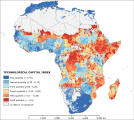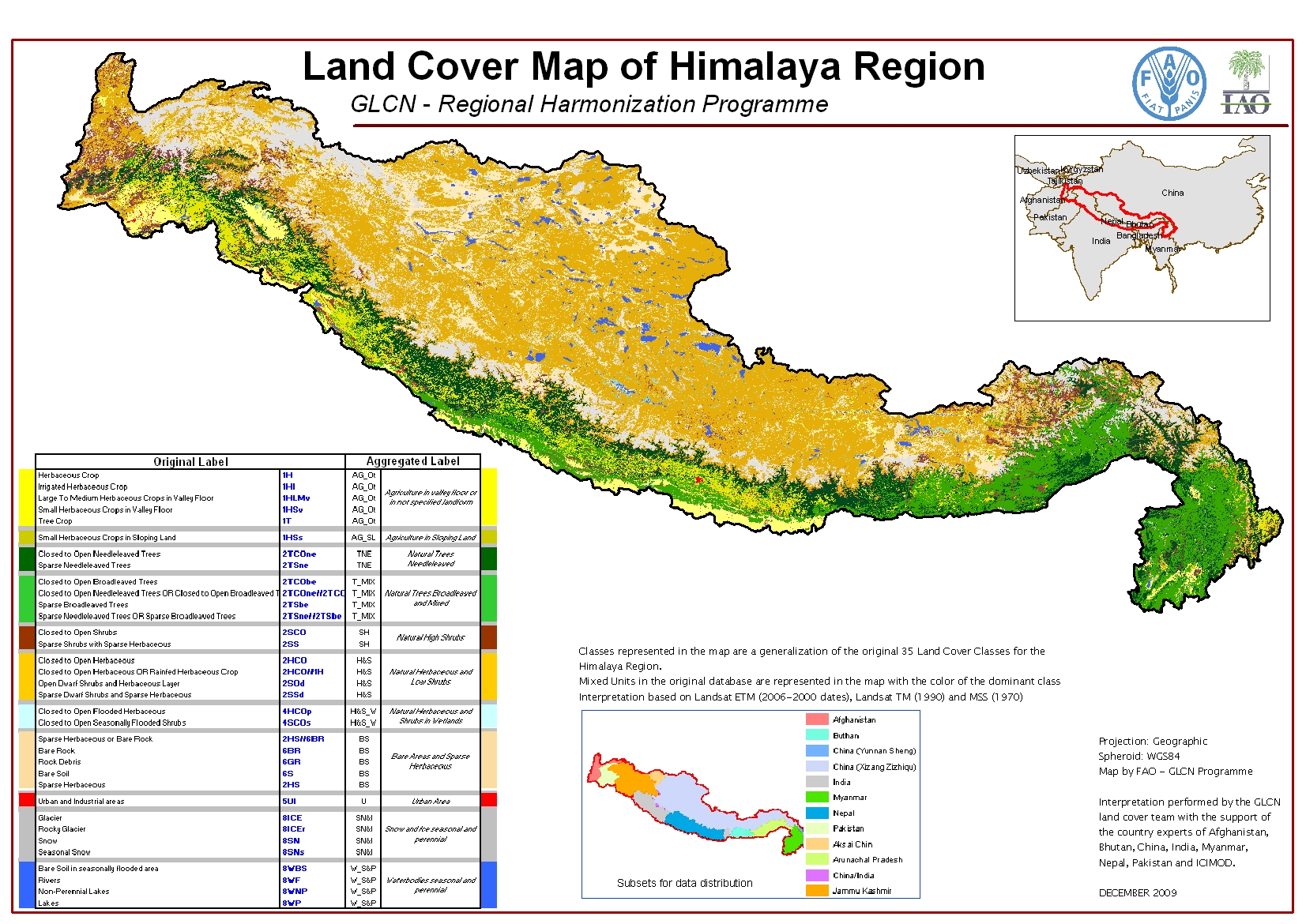FAO-UN NRL
Type of resources
Available actions
Topics
Keywords
Contact for the resource
Provided by
Years
Formats
Representation types
Update frequencies
status
Scale
Resolution
-

The “technological capital index” symbolizes the physical means that determine the potential adaptive capacity degree of a particular unit of analysis in 2010. It is linked with the diffusion of basic life technology and infrastructure (e.g. transportation network). It is the combination of two underlying indexes: the “household technology index” and the “infrastructure index”. These original indexes correspond to the two principal components recognized by Principal Component Analysis among 10 potential variables. The analysis assigned relative weights to the “household technology index” and the “infrastructure index”, that are 0.62 and 0.38, respectively. This dataset has been produced in the framework of the “Climate change predictions in Sub-Saharan Africa: impacts and adaptations (ClimAfrica)” project, Work Package 4 (WP4). More information on ClimAfrica project is provided in the Supplemental Information section of this metadata.
-

The Himalaya Regional Land Cover database has been produced as part of the Global Land Cover Network - Regional Harmonization Programme. Its extent includes the Hindu Kush - Karakorum - Himalaya mountain chain, which is the widest and most recent in the world. The database was developed using 2000 Landsat satellite imagery as reference source for an automatic segmentation. The land cover change was then assessed upon other sets of historical imagery: 1970-80, 1990, and 2007. The mapping area covers about 1,500,000 km2, intersecting 6 different UTM zones. It includes portions of the following 5 countries: Afghanistan, Pakistan, India, China and Myanmar. Nepal and Bhutan are fully mapped. Aim of the programme is harmonize the regional land cover database which will allow national institutions and Governments to conduct assessment and monitoring of the land cover dynamics for environmental analysis and planning. The Himalaya land cover mapping was performed at 1:350,000 scale and derives from a combination of visual and automatic interpretation of recent Landsat ETM satellite imageries. For this purpose, the FAO’s MADCAT software was adopted, in order to perform automatic classification. FAO’s GeoVIS interpretation software was also used. The land cover legend, consisting of 35 classes, was set up using the FAO LCCS methodology, a standardized a priori land cover classifications system applied with success in a series of FAO projects. As result, 511,292 polygons were delineated. To refine the interpretation, high resolution images from Google Earth were used. The tabular attributes contains 14 fields with the following meaning: Z007CODE: GIS code of the class. Z007USLB: User label updated with the 2004/2007 images. Z007PERC: Percentage of the class. In case of a single unit the percentage is 100%; in case of mixed unit the percentage is 60/40, meaning that the first term of the mixed unit covers 60% of the polygon’s area while the second term of the mixed unit covers the 40%. HECTARES: Area of the polygon in Hectares. The calculation was made in UTM projection (WGS84), according to the UTM Zone indicated in the field “Zone”. AREA: Area of the polygon in square meters. The calculation was made in UTM projection (WGS84), according to the UTM Zone indicated in the field “Zone”. AGG: Aggregated code used for the Map layout. The aggregation criteria is shown in the attached file “Conversion table for the map_35cl”. ZONE: The UTM zone where the polygon falls. CODE1: The user label either as single unit or as first term of a mixed unit. CODE2: The user label as second term of a mixed unit, when present. BOOLEAN1: The LCCS Boolean formula of Code 1, giving its representation as land cover objects. BOOLEAN2: The LCCS Boolean formula of Code 2, giving its representation as land cover objects. LCCSMAIN1: The LCCS main group containing Code1. LCCSMAIN2: The LCCS main group containing Code2. AUTO_ID: The unique number identifying each polygon. Notice that from the fields “Boolean1”, “Boolean2”, “LCCSMain1”, “LCCSMain2” is possible to derive the objects making up the land cover class covering the polygon(s) wanted.
 FAO Map Catalog
FAO Map Catalog